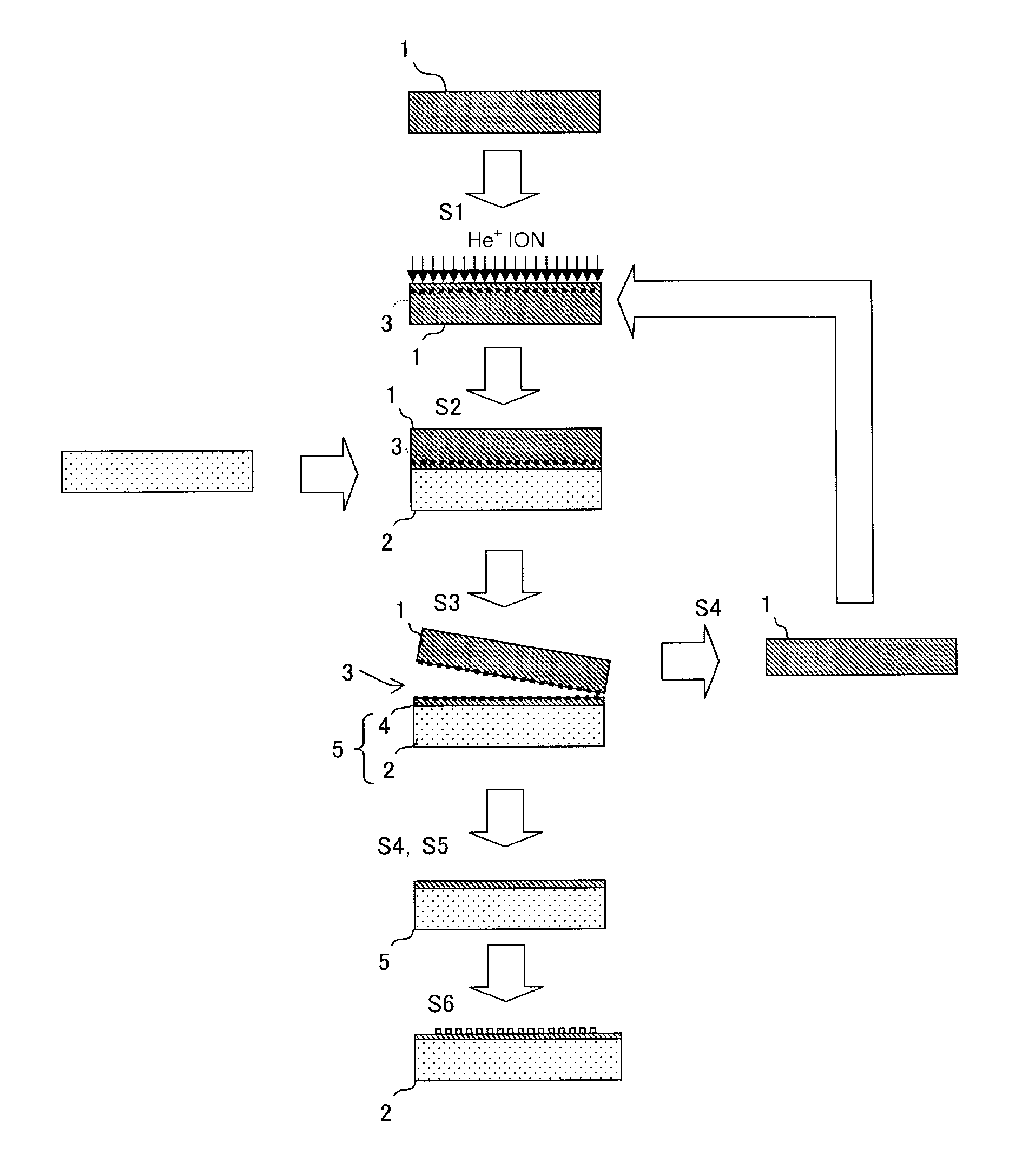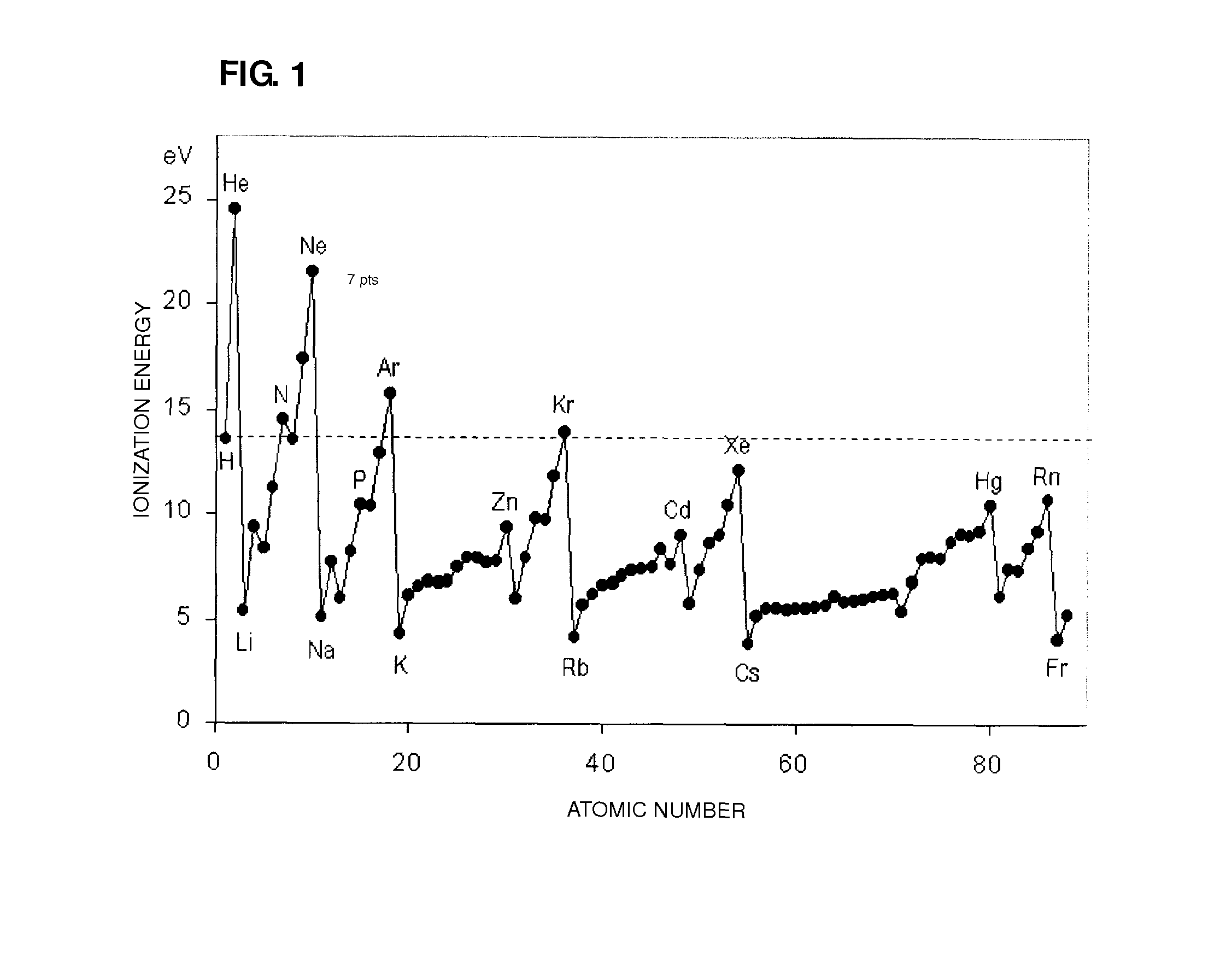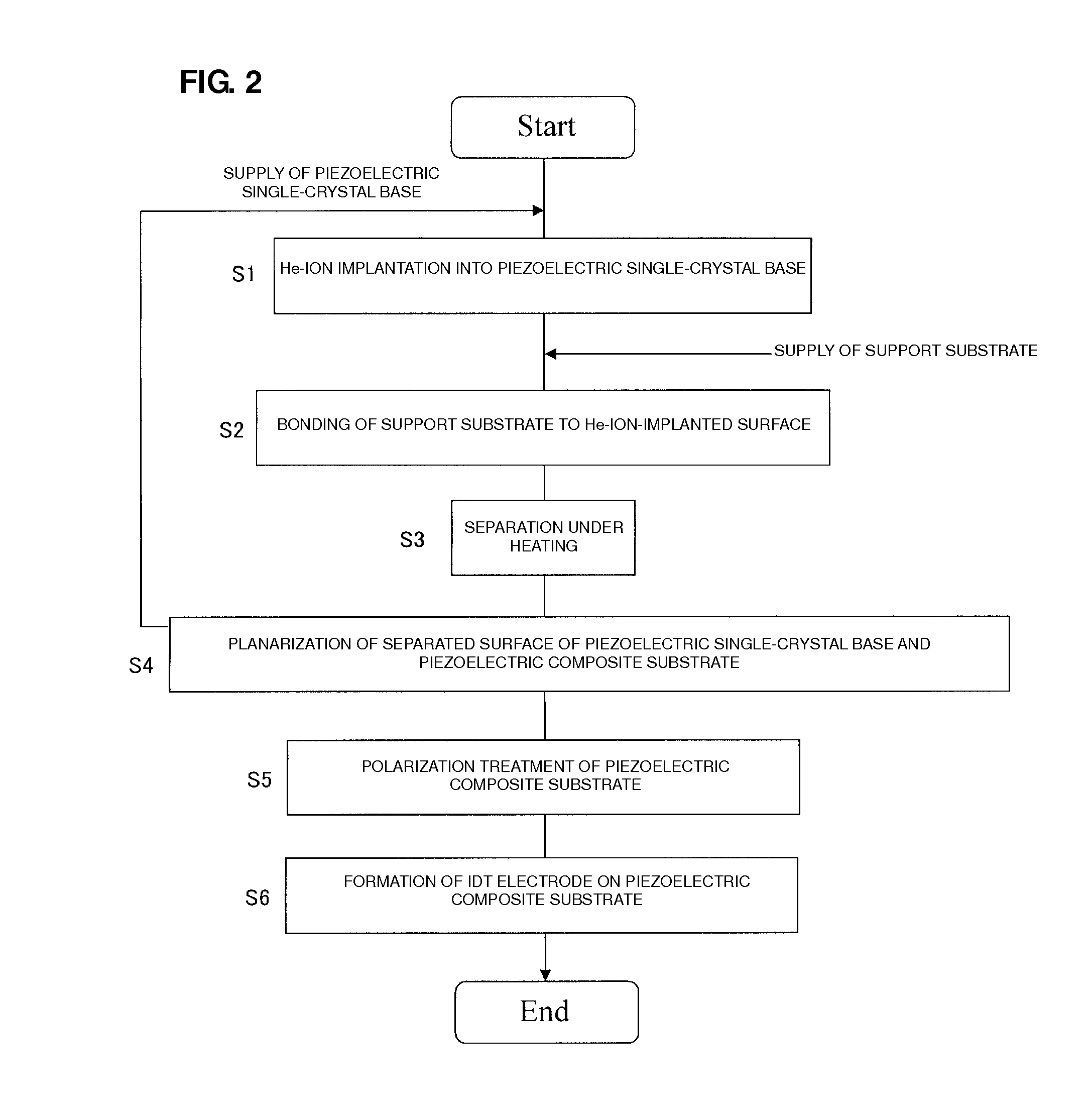Method for producing piezoelectric composite substrate
a composite substrate and piezoelectric technology, applied in the field of piezoelectric composite substrate production, can solve the problems of difficult cutting and low efficiency of microcavities
- Summary
- Abstract
- Description
- Claims
- Application Information
AI Technical Summary
Benefits of technology
Problems solved by technology
Method used
Image
Examples
Embodiment Construction
[0022]A method for producing a piezoelectric composite substrate according to a preferred embodiment of the present invention will be described below with reference to a method for producing a surface acoustic wave resonator as an example. In this preferred embodiment, LiNbO3 is preferably used as a piezoelectric material. A Si substrate is preferably used as a support substrate.
[0023]FIG. 2 shows a flow chart of the method for producing a surface acoustic wave resonator according to this preferred embodiment. FIG. 3 is a schematic view showing a piezoelectric composite substrate, a piezoelectric single-crystal base, and a support substrate in steps in the flow chart.
[0024]In this production process, an ion-implantation step (S1) of implanting He+ ions into a mirror-polished main surface of a piezoelectric single-crystal base 1 is performed. Here, the implantation energy of He+ ions is preferably set to about 150 KeV, for example. The dose level (density of implanted ions) is prefer...
PUM
| Property | Measurement | Unit |
|---|---|---|
| roughness | aaaaa | aaaaa |
| Curie temperature | aaaaa | aaaaa |
| temperature | aaaaa | aaaaa |
Abstract
Description
Claims
Application Information
 Login to View More
Login to View More - R&D
- Intellectual Property
- Life Sciences
- Materials
- Tech Scout
- Unparalleled Data Quality
- Higher Quality Content
- 60% Fewer Hallucinations
Browse by: Latest US Patents, China's latest patents, Technical Efficacy Thesaurus, Application Domain, Technology Topic, Popular Technical Reports.
© 2025 PatSnap. All rights reserved.Legal|Privacy policy|Modern Slavery Act Transparency Statement|Sitemap|About US| Contact US: help@patsnap.com



